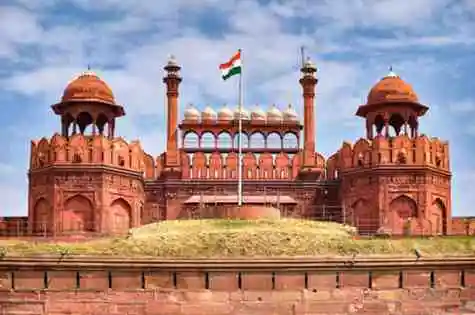The Taj Mahal, located in Agra, India, is one of the most iconic monuments in the world. Recognized as a UNESCO World Heritage Site, the Taj Mahal is not only a masterpiece of Mughal architecture but also a powerful symbol of love and devotion. In this blog, we explore the history of the Taj Mahal, from its origins to its present-day significance.
—
Origins of Tajmahal
Taj Mahal was commissioned in 1632 by Mughal Emperor Shah Jahan in memory of his beloved wife Mumtaz Mahal, who died during childbirth. Her death left Shah Jahan heartbroken, and he vowed to create a monument that would be as eternal as their love.
—
Architectural Brilliance
The construction of the Taj Mahal took approximately 22 years, with more than 20,000 artisans and workers contributing to its creation. The chief architect is believed to be Ustad Ahmad Lahauri, a renowned Persian architect.Built primarily with white marble, the structure is adorned with precious stones, intricate carvings, and calligraphy from the Quran. The symmetrical layout, grand dome, and minarets showcase the height of Mughal architectural excellence.
—
The Taj Mahal Complex
The Taj Mahal is not just a single structure; it’s a complex that includes:
- Main mausoleum housing the tombs of Mumtaz Mahal and Shah Jahan
- A reflecting pool that beautifully mirrors the Structure
- Gardens inspired by Persian and Mughal Landscaping
- A mosque and a guest house
- The entire complex is aligned along a north-south axis with the Yamuna River flowing behind it, enhancing its tranquil beauty.
—
Historical Significance
Beyond being a love story etched in stone, the Taj Mahal reflects the rich history of the Mughal Empire. It stands as a reminder of a time when art, culture, and architecture flourished in India under Mughal rule.
—
British Colonial Period and Preservation
During the British colonial period, the Taj Mahal suffered neglect and looting. However, by the late 19th century, restoration efforts were initiated by Lord Curzon, the then Viceroy of India. Today, the Archaeological Survey of India (ASI) and UNESCO play key roles in its preservation.
—
The Taj Mahal Today
Today, the Taj Mahal attracts millions of visitors every year and is considered one of the New Seven Wonders of the World. It continues to inspire artists, poets, and lovers around the globe. As a major tourist attraction in India, it significantly contributes to the country’s tourism industry.
—
Fun Facts About the Taj Mahal
- The Taj changes color depending on the time of day and the moonlight
- .It is perfectly symmetrical except for the tomb of Shah Jahan, which was added later.
- Legends say Shah Jahan planned a black marble replica across the Yamuna River.
—
Final Thoughts
The Taj Mahal’s history is a blend of romance, art, and legacy. More than just a monument, it represents the enduring power of love and the timeless beauty of human creativity.



